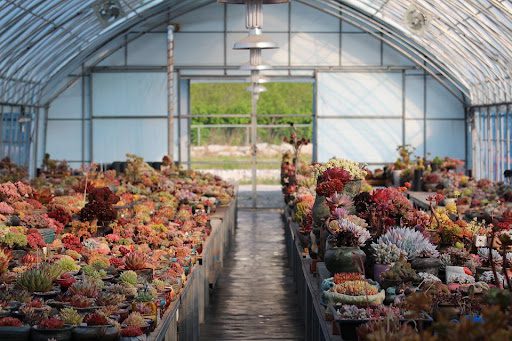Did you know that even summer plants have a limit to how much heat and sun they can withstand? Even the hardiest plant may wilt and dry out if the sun is scorching hot—which is often the case when it comes to Maine’s sweltering summers.
In this guide, we offer some basic summer gardening tips that can help you understand how to protect your plants from the harsh and unforgiving rays of the sun.
So let’s get started.
Water Plants at the Right Time in the Right Way
Providing your plants with ample amounts of water during hot summers is essential to their survival. The best time of the day to water plants is early morning or early evening. However, if they are already showing signs of wilting, water them as soon as possible.
Plants in pots should be watered more frequently since they dry out quickly.
Make sure to aim the water stream at the plant’s base so that it can seep through the soil easily and reach its root quickly. Do not spray water on the leaves, especially during hot summers, as it can scorch the leaves.
Protect Your Plant Roots With Mulching
Adding tree bark, wood chippings, and tiny pebbles into the soil in tandem with moist and well-rotted manure can help your plants retain moisture even during the hottest days. The extra coverage of the mulch will also reduce the rate of evaporation from the soil and keep it cool.
Mulching works best for shallow-rooted plants like hydrangea or cherry trees, as well as young and sensitive plants that can suffer from damage if the top layer of the soil dries out.
Shade Your Plants from the Sun’s Rays
If you are experiencing a heatwave, it’s important to protect your plants by moving pots into covered structures like pergolas, garden arbors, or greenhouses. Add a layer of paint to shade your greenhouse windows or place some shades to reduce the sun’s glare. Keep the door and windows open to ensure proper ventilation so that the room doesn’t get too hot.
If the plants are too heavy to be moved or are planted into the ground, you can invest in shade cloth or net that will protect them from the harsh sun’s rays.
Use Companion Plants to Help Protect Younger Plants
Companion plants are a great way to create natural shade for sensitive or younger plants or transplants. These are taller heat-tolerant plants that thrive in the sun and can be planted closer to shade-loving plants to give them much-needed cover during sunny days.
Keep in mind, though, that even companion plants can wither if the heat becomes too intense, so make sure they are protected by using a shade net.
Change Out or Seal Your Terracotta Pots
Terracotta pots look stunning in the garden; however, they are not the best types of containers to house plants in heat. This is because terracotta allows for quick evaporation, which can dry out your plants quickly.
It’s a good idea to transplant your plants from terracotta pots to light-colored plastic pots, which can reflect the sun’s rays and heat more effectively. However, do this before the heatwave hits; otherwise, the newly transplanted pots will be vulnerable to heat.
If you need to use terracotta pots, be sure to water them more frequently and keep them shaded.
Drought-Tolerant Plants
If you are expecting hot weather, add drought-tolerant plants to your garden. These plants also grow well in poor, free-draining soil and are not damaged by the sun.
Drought-tolerant plants are also a suitable option in low-rain areas since they do not require much water consumption. The best part is that these plants come in a variety of types and colors, including cacti, plants with small leaves and silvery foliage, and succulents like aloe vera, spiral aloe, agave, crown-of-thorns, queen of the night, and more.
Are you a plant lover who is heartbroken to see your plants wilt during the summertime? At Stone Solutions Maine, we can help transform your backyard into a vibrant and stunning landscape with our outdoor landscaping services. Reach out to us today to book our services.

